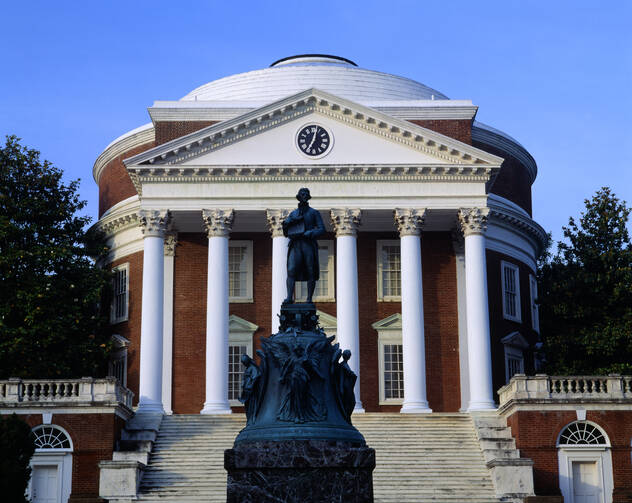A year ago Rolling Stone journalist Sabrina Erdely published the sensational, and now thoroughly discredited, exposé, “A Rape on Campus,” which detailed in horrific detail an alleged gang rape at the University of Virginia. As I scrolled through my Facebook newsfeed the evening of Nov. 19 I read again and again the same refrain from my fellow UVA alumni: “I am shocked but not surprised.”
To refresh your memories: The piece told the story of a female student, identified only as Jackie, who recounts attending a date party at the Phi Kappa Psi fraternity. Her date, an upperclassman, leads her to a bedroom upstairs, where, allegedly, she is thrown on to a glass table and raped by seven men over the course of three hours. The incident ends with a classmate she recognizes from her anthropology class on top of her:
Someone handed her classmate a beer bottle. Jackie stared at the young man, silently begging him not to go through with it. And as he shoved the bottle into her, Jackie fell into a stupor, mentally untethering from the brutal tableau, her mind leaving behind the bleeding body under assault on the floor.
Shocked but not surprised. I have to admit this was my gut reaction as well, which in hindsight seems strange to me. I had attended a couple of parties at Phi Kappa Psi during my first year at the University of Virginia. I was aware of alcohol-fueled hookups, which by today’s standards of affirmative consent, may have passed into the sexual assault grey zone. But ritualized, premeditated gang rape? If I had thought such an atrocity was within the realm of possibility, surely I would not have stepped foot in the place.
And yet when I saw Ms. Erdely’s reporting, I wanted to believe it. Not because I have an axe to grind with fraternities, but because I didn’t want to question the integrity of the victim, whose voices are too often ignored or silenced. And I did not want to question the integrity of the reporter, who no doubt shared my instinct to take Jackie at her word.
Of course, you know what happened next: Other journalists investigated Ms. Erderly’s work, and found she had not interviewed the accused or any of the central witnesses, at the request of Jackie. Slowly, the whole story unraveled. In its wake, a fraternity house was left vandalized, university administrators were defamed and, worst of all, Jackie herself was potentially revictimized, whatever trauma she had experienced exposed to the harsh and unforgiving scrutiny of the media.
This unfortunate saga has been in the back of my mind in recent weeks as I’ve read stories about the role of the media at protests against institutionalized racism on various college campuses. Earlier this month at the University of Missouri, Tim Tai, a freelance journalist for ESPN, was forcibly prevented from taking pictures of a tent city activists had set up on public grounds. In a widely circulated video, an assistant professor of mass media is heard saying, “Who wants to help me get this reporter out of here? I need some muscle over here!” The activists justified keeping out the media with a statement on Twitter, which read: “We ask for no media in the parameters so the place where people live, fellowship, and sleep can be protected from twisted insincere narratives.” (The group behind the protests, Concerned Student 1950, later reversed course, putting out fliers that read, "The media is important to tell our story and experiences at Mizzou to the world. Let's welcome and thank them.")
On Nov. 18, students at Smith College organized a sit-in of 300 to 500 people in solidarity with the University of Missouri. The news site MassLive reported media coverage was not welcome, at least not in the traditional sense:
Alyssa Mata-Flores, a 21-year-old Smith College senior and one of the sit-in's organizers, explained that the rule was born from "the way that media has historically painted radical black movements as violent and aggressive."
"We are asking that any journalists or press that cover our story participate and articulate their solidarity with black students and students of color," she told MassLive in the Student Center Wednesday. "By taking a neutral stance, journalists and media are being complacent in our fight."
I do not dispute Ms. Mata-Flores’s assertion that the media has at times failed in its coverage of marginalized peoples and movements. Protesters at other schools, including the Jesuit Loyola University Chicago, have adopted similar "no media" policies. But the answer to skewed or biased reporting is not less neutrality but more. If the Rolling Stone debacle taught me one thing it was the danger of mixing journalism with advocacy. Ms. Erdely knew that she wanted to shed light on the horrors of sexual assault on campus, and when she found a story that was sure to make headlines, it became too good to fact check. We cannot say definitively that her reporting “hurt the cause” of fighting sexual assualt on campus (some worry that victims’ stories will now be easier to dismiss), but it certainly did not help.
But the institutions and people wronged by the Rolling Stone’s reckless disregard for the facts did not respond by blocking out the media. Rather, it was excellent reporting by The Washington Post and others, as well as an independent report by the Columbia Journalism Review, that uncovered the truth. To paraphrase Supreme Court Justice Louis Brandeis, the remedy to bad journalism, is more journalism. At its best, the free press keeps organizations and movements transparent and honest, which in the long run is in their best interests. Today, campus movements for racial justice deserve nothing less.








